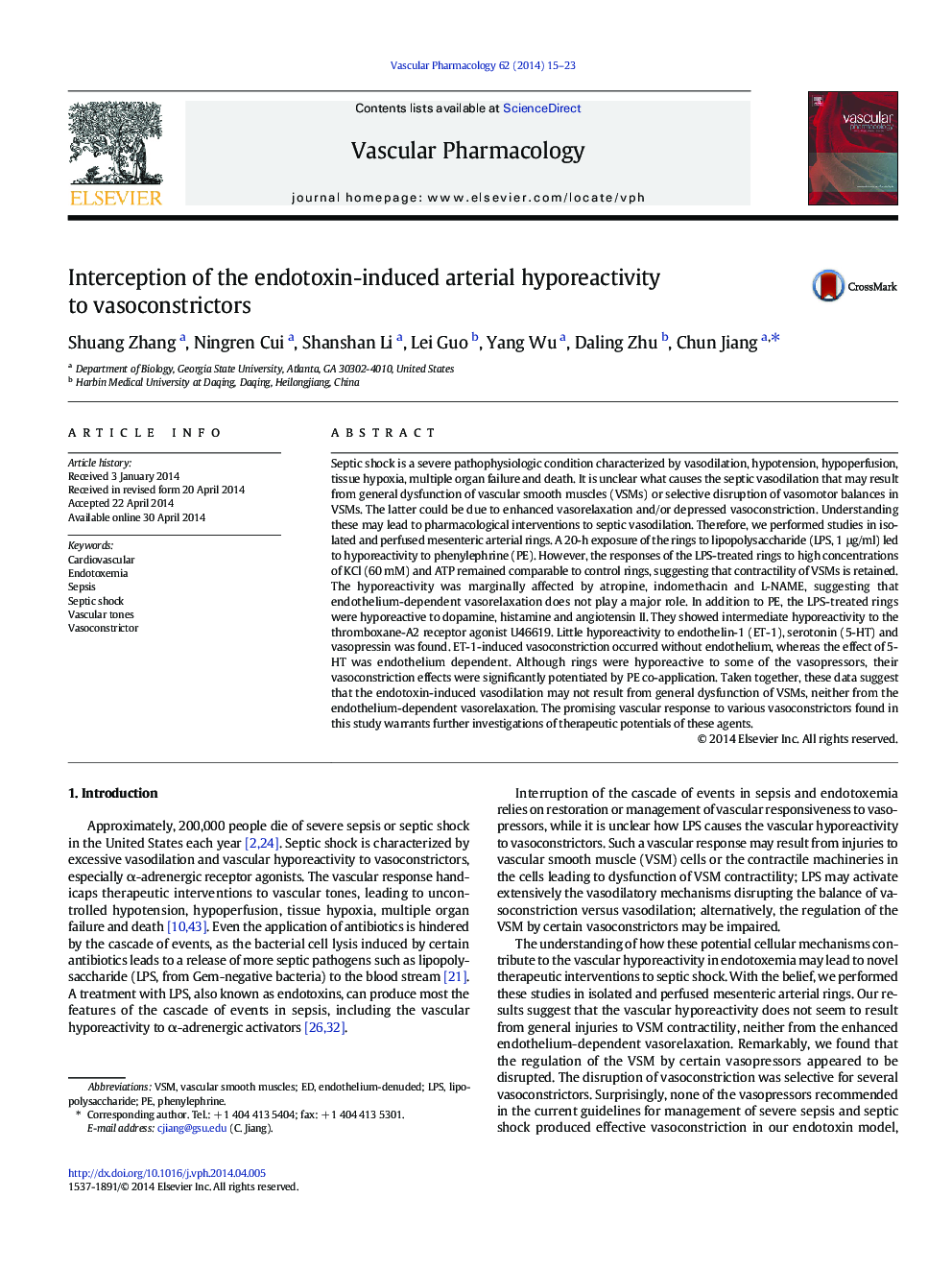| کد مقاله | کد نشریه | سال انتشار | مقاله انگلیسی | نسخه تمام متن |
|---|---|---|---|---|
| 2574159 | 1129665 | 2014 | 9 صفحه PDF | دانلود رایگان |
Septic shock is a severe pathophysiologic condition characterized by vasodilation, hypotension, hypoperfusion, tissue hypoxia, multiple organ failure and death. It is unclear what causes the septic vasodilation that may result from general dysfunction of vascular smooth muscles (VSMs) or selective disruption of vasomotor balances in VSMs. The latter could be due to enhanced vasorelaxation and/or depressed vasoconstriction. Understanding these may lead to pharmacological interventions to septic vasodilation. Therefore, we performed studies in isolated and perfused mesenteric arterial rings. A 20-h exposure of the rings to lipopolysaccharide (LPS, 1 μg/ml) led to hyporeactivity to phenylephrine (PE). However, the responses of the LPS-treated rings to high concentrations of KCl (60 mM) and ATP remained comparable to control rings, suggesting that contractility of VSMs is retained. The hyporeactivity was marginally affected by atropine, indomethacin and L-NAME, suggesting that endothelium-dependent vasorelaxation does not play a major role. In addition to PE, the LPS-treated rings were hyporeactive to dopamine, histamine and angiotensin II. They showed intermediate hyporeactivity to the thromboxane-A2 receptor agonist U46619. Little hyporeactivity to endothelin-1 (ET-1), serotonin (5-HT) and vasopressin was found. ET-1-induced vasoconstriction occurred without endothelium, whereas the effect of 5-HT was endothelium dependent. Although rings were hyporeactive to some of the vasopressors, their vasoconstriction effects were significantly potentiated by PE co-application. Taken together, these data suggest that the endotoxin-induced vasodilation may not result from general dysfunction of VSMs, neither from the endothelium-dependent vasorelaxation. The promising vascular response to various vasoconstrictors found in this study warrants further investigations of therapeutic potentials of these agents.
Figure optionsDownload high-quality image (179 K)Download as PowerPoint slide
Journal: Vascular Pharmacology - Volume 62, Issue 1, July 2014, Pages 15–23
